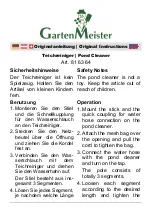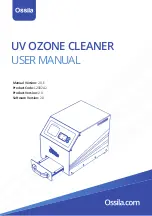
Principle of ultrasonic cleaning
PZT oscillators underneath the tank convert electrical energy into mechanical vibrations.
SONOREX
units produce oscillations of 35 kHz (TK 100 /H 43 kHz) in the cleaning liquid. Tiniest
vacuum bubbles are formed which then implode (cavitation). This cavitation principle removes
dirt and grease from the deepest pores - "electronic scrubbing" - at all points that come into
contact with the cleaning liquid.
3. Start
- Make sure that the outlet of the unit – either ball cock, closing cap (RK 100 SH) or
clamp (TK 100 H) - is closed!
Fix the outlet kit at TK 100 H before starting, see point 4.
- Fill the oscillating tank up to the filling mark.
- Connect the unit to a grounded socket.
3.1. Degassing
Degassing the cleaning liquid enhances the cleaning effect.
Cleaning and contact liquids contain dissolved gases (for example, oxygen). Sonicate
cleaning and contact liquid, which have just been poured into the oscillating tank or have
been left in it for a longer period of time, for approx. 5 to 15 minutes before starting the
cleaning process. Degas oscillating tanks with a volume of more than 10 l for roughly
30
minutes. During the degassing process, the cavitation noise changes and the loud
degassing noise decreases toward the end of the process, the unit appears to run more
quietly. Lower noise levels indicate the end of the degassing process, not a reduction in
ultrasonic energy.
3.2. Cleaning
•
Be sure that the objects in the tank are completely covered with liquid.
•
Normally the objects may be cleaned
directly
in the ultrasonic tank with an insert
basket.
•
In the following cases clean objects
indirectly
in inset beakers or non-perforated
insert tanks to protect the stainless steel oscillating tank:
- when chemically aggressive cleaning liquids (for example acids, etc.) are used.
- when chemically aggressive substances (for example when cleaning racks from
film developing machines) or
- when abrasive substances (for example polishing paste, quartz, sand) are to be
removed.
- 14 -













































